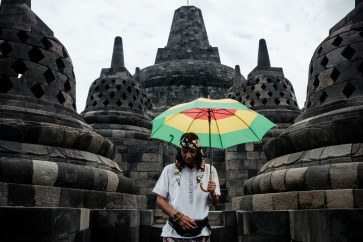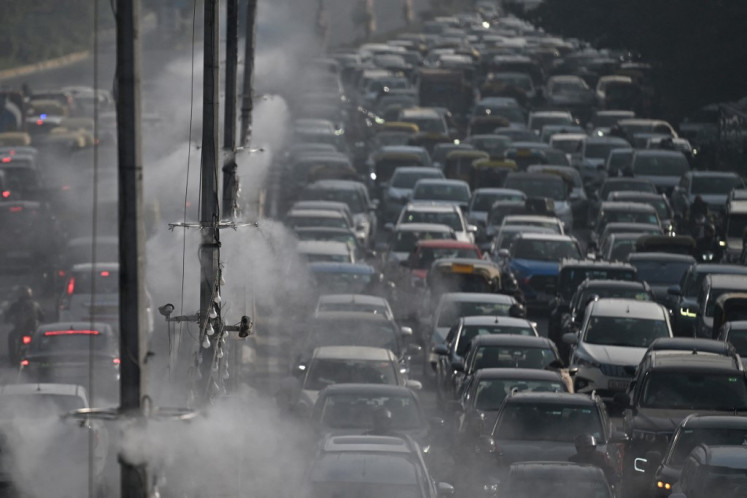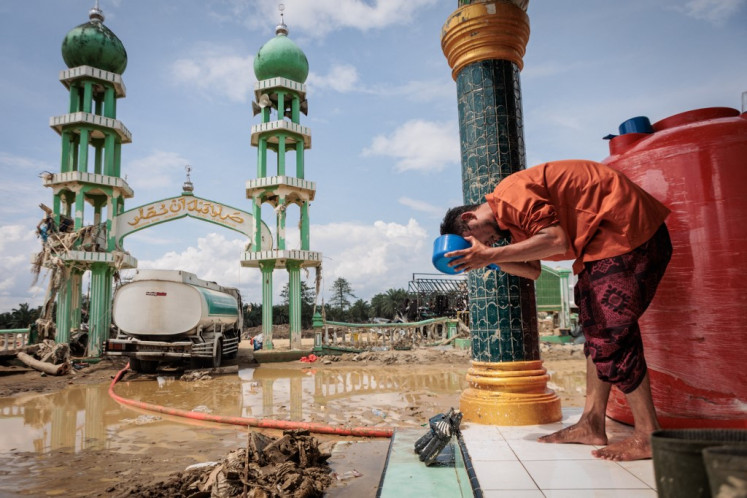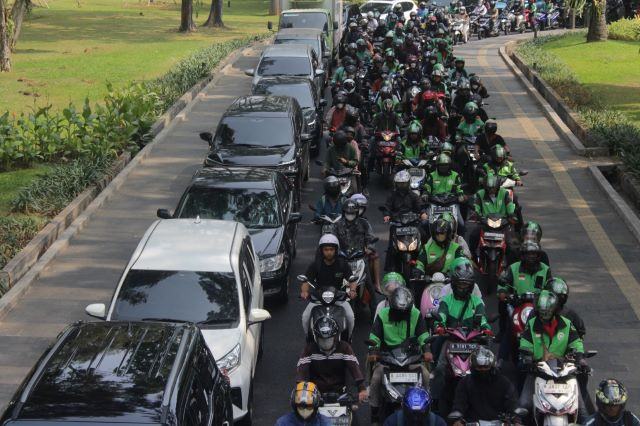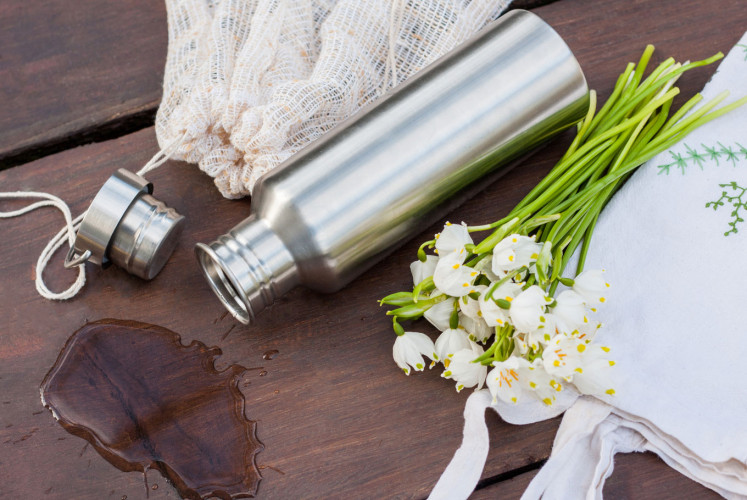Popular Reads
Top Results
Can't find what you're looking for?
View all search resultsPopular Reads
Top Results
Can't find what you're looking for?
View all search resultsHaj deaths show challenge of shielding pilgrims from scorching climate
The deaths highlight a looming challenge for organizers as climate change takes hold in the region: the practice of requiring official permits for such services is stirring concern that unregistered pilgrims could increasingly be exposed to life-threatening temperatures.
Change text size
Gift Premium Articles
to Anyone
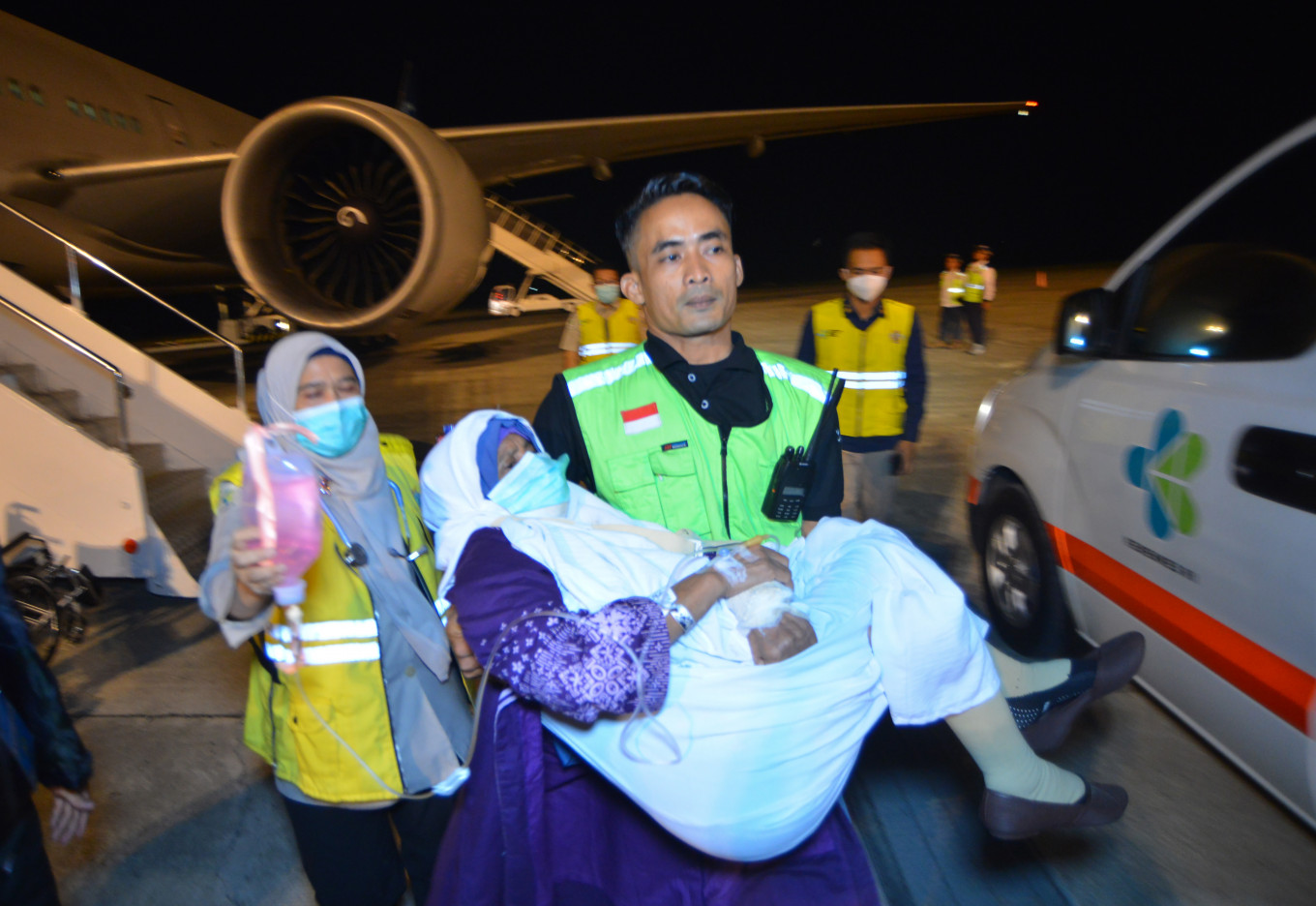 An official holds a haj pilgrim who falls sick during the arrival of the first Padang haj flight group at Minangkabau International Airport in Padang Pariaman, West Sumatra, on June 24, 2024. As many as 392 haj pligrims from Padang city in the flight group safely arrived in Indonesia after performing haj. One person in the flight group died during the ritual. (Antara/Iggoy el Fitra)
An official holds a haj pilgrim who falls sick during the arrival of the first Padang haj flight group at Minangkabau International Airport in Padang Pariaman, West Sumatra, on June 24, 2024. As many as 392 haj pligrims from Padang city in the flight group safely arrived in Indonesia after performing haj. One person in the flight group died during the ritual. (Antara/Iggoy el Fitra)
H
undreds of the pilgrims who died in fierce heat at this year's haj were not officially registered with the Saudi authorities, with the result that many had no access to vital services like air-conditioned buses and cool-off tents.
The deaths highlight a looming challenge for organizers as climate change takes hold in the region: the practice of requiring official permits for such services is stirring concern that unregistered pilgrims could increasingly be exposed to life-threatening temperatures.
At the same time, high prices for official haj packages are driving some Muslims to take cheaper unofficial routes to the ritual, even though these lack the crucial permits, and to exploit an easing of curbs on some other kinds of Saudi visas.
The unregistered pilgrims' lack of a permit made it difficult to provide them with services and care, the security spokesman for Saudi's Ministry of Interior, Colonel Talal bin Shalhoub, said in an interview on Saudi TV channel al-Arabiya.
Critics of the government say all pilgrims, whatever their status, should be protected from heat, and allege the authorities this year cracked down on unauthorized attendees.
"This focus on registered visit versus unregistered is a red herring ... If you are there and you need help, you should get access to it," said Khalid al-Jabri, a physician who worked for the Saudi security agency that oversees haj and is currently part of the Saudi opposition in exile.
Saudi Arabia's international media office did not immediately respond to a request for comment.
Saudi Arabia’s health minister, Fahad Al-Jalajel said in a statement that health authorities provided services to unregistered pilgrims on 141,000 occasions during the haj.
Heat stroke risk
But he acknowledged that unregistered pilgrims "walked long distances under direct sunlight without adequate shelter or comfort", and added that 83 percent of the 1,301 fatalities were among unregistered pilgrims.
Pilgrims said those without permits had to walk at times in temperatures above 50 degrees Celsius, while most registered pilgrims were able to make much of the journey by air-conditioned bus.
A Reuters witness said he saw thousands walking on the highway near Mina, a vast tent city on the way to Mecca, rather than using buses like most registered pilgrims. Pilgrims told Reuters that Saudi officials routinely checked buses before departure to ensure only registered pilgrims were aboard.
Almost two million pilgrims made their way to Mecca this year to perform haj rites as taught by the Prophet Mohammad to his followers 14 centuries ago.
It is not known how big the influx of unauthorised pilgrims was. But Saudi Director of Public Security Mohammed bin Abdullah al-Bassami said this month the kingdom had deported 171,587 people who were not residents of Mecca, in apparent reference to people caught trying to perform haj without a permit.
Heat-related deaths along the haj are not new, but climate change has made haj increasingly dangerous.
A 2021 study found that if the world warms by 1.5 C above pre-industrial levels, heat stroke risk for pilgrims on the haj will be five times greater. The world is on track to reach 1.5 C of warming in the 2030s.
"It's a situation that is only getting worse with time," said Elfatih Eltahir, co-director of the Jameel Observatory and a professor at MIT, who published a paper on the dangers of heat stress for pilgrims in 2019.
Seeking religious tourists
Despite such worrying climate projections, Saudi Arabia has said it wants to expand the numbers of religious tourists, aiming to welcome 30 million pilgrims for haj and the year-round pilgrimage umra annually by 2030, as part of its broader strategy to wean the economy off oil.
In 2019, Saudi Arabia earned about $12 billion annually from haj and umra, according official data.
Haj tours can cost from $5,000 to $10,000 per person, and the price is part of the reason many take unofficial packages.
"Finances are...a huge factor," said Khaled El Sherbini, the owner of an Egypt-based tour agency. He said an Egyptian could do haj "unregistered" for 30,000 or 40,000 EGP ($622-$829), a fraction of an official package costing about 300,000 EGP ($6,222.78). In 2018 a haj package would have cost about $3,000.
The kingdom is determined to protect official haj packages. Ahead of the pilgrimage, its interior ministry said those caught transporting an unregistered pilgrim would face up to six months in prison and a fine of up to 50,000 riyals ($13,000).
An Egyptian crisis unit tasked with investigating the deaths of Egyptian pilgrims said on Saturday it suspended licences of 16 tourism companies and referred them for prosecution.
Pilgrims who bought lower-end packages told Reuters they were packed into crowded tents with 80 to 200 people and limited cooling. Alia Asma, an Indian pilgrim, said that she had to walk longer distances than those who bought more expensive tours.
“The rich can afford luxurious apartments and the poor come into the tents,” said Irfan Al Alawi, the executive director of the Islamic Heritage Research Foundation.

